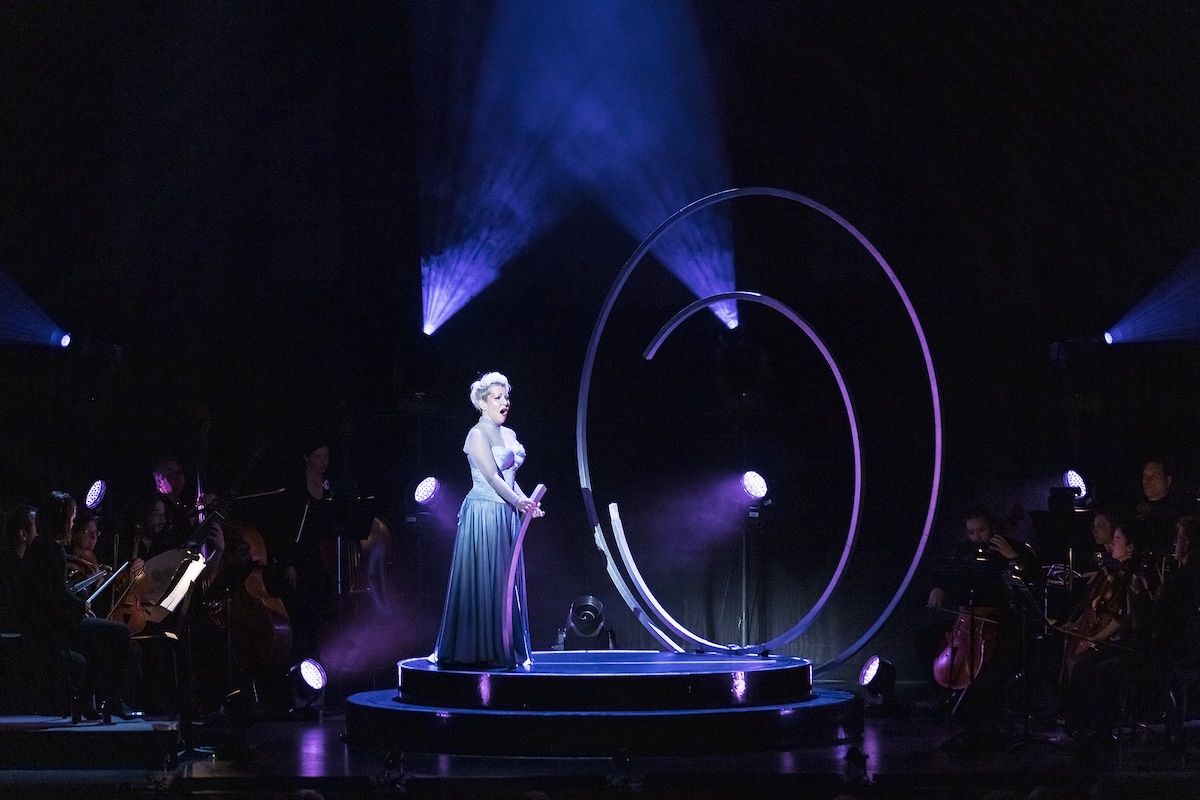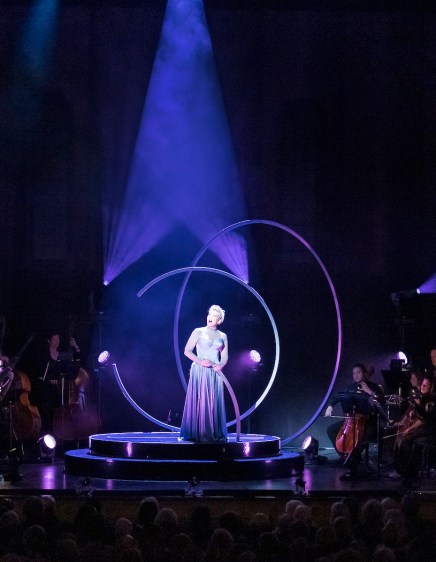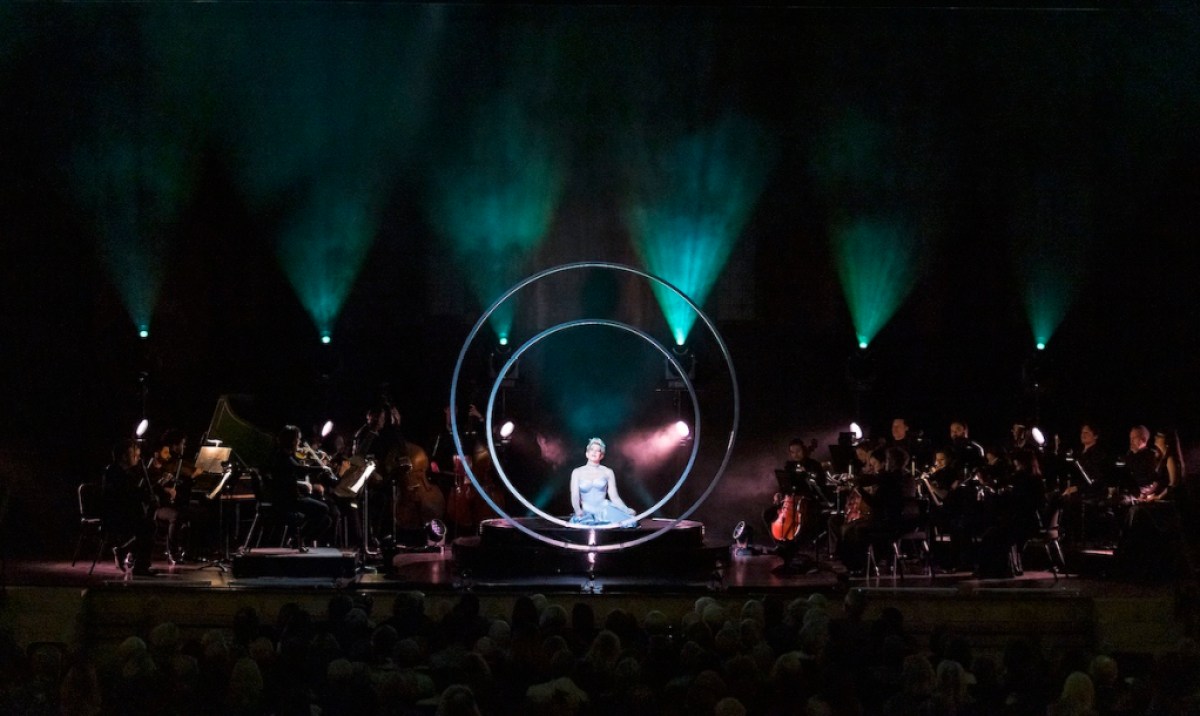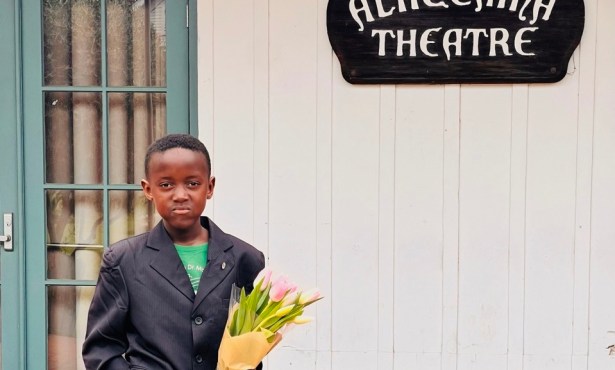Arcs of a Diva, at the Santa Barbara Granada
Mezzo-Soprano Joyce DiDonato’s Grand yet Intimate Project ‘EDEN’ Yields Fruit

She had me at Ives and Mahler. The two composers served as telling framing devices for Joyce DiDonato’s ambitious project EDEN, which landed in gala style at the Granada Theatre last week. Ives’ hauntingly iconic The Unanswered Question functioned as the evening’s opening seed, so to speak, with the resident Il Pomo d’Oro Music Ensemble laying out the misty, mystical instrumental groundwork, while our mezzo-soprano protagonist intoned the famed five-note motive — or central “question” — from the back of the hall. She gradually wended her way on stage to join the ensemble in a front-and-center staging structure fitted with arcs and spheres.

After winding through a wide range of pieces and musical eras, including vehicles from Gluck and Handel demonstrating her baroque mastery and a light musical theater-flavored new song, “The First Morning of the World,” by film composer Rachel Portman, DiDonato landed on Mahler’s solemn beauty, Ich bin der Welt abhanden gekommen (I Have Been Lost to the World). This finale of a project, imbued with environmental alarm and hope for the future, was, aptly, also an implied question.
EDEN, co-commissioned and hosted by UCSB Arts & Lectures, arrived in our own little paradise of a city with much hoopla and anticipation (including a cover story in the Independent). Even so, many observers and would-be observers wondered, what exactly is this thing? At a post-concert reception, I spoke briefly with the naturally gracious DiDonato and expressed both my great admiration for her work and lingering questions about its form, genre, and artistic identity. To the work’s credit, I didn’t quite know what it was and where to put it, how to describe it, I told her. “Neither do I,” she exclaimed gleefully. “I think sometimes in art that can be an advantage.”
Whatever one calls it — theatricalized recital? art music concept spectacular? — EDEN was grand yet also intimate. The masterful DiDonato was beautifully showcased in this cross-historical range of music, and managed to convey microcosmic drama within each piece. As a feature of the roadshow, also with stage direction by Marie Lambert-Le Bihan, lighting design by John Torres, and brief thespian presence of actor Manual Palazzo, she consciously leans into the future by surrounding herself with a local children’s choir. In this case, that ensemble was the impressive “Sing!” project out of the Music Academy, a sea of friendly yellow shirts, making a joyous noise.
In all, it made for a full plate of exquisite sampler portions, inflected by questions great and subtle. And did we mention that each concert-goer was given a seed-embedded paper disc on the way out? Further flowering to follow.
Support the Santa Barbara Independent through a long-term or a single contribution.






You must be logged in to post a comment.